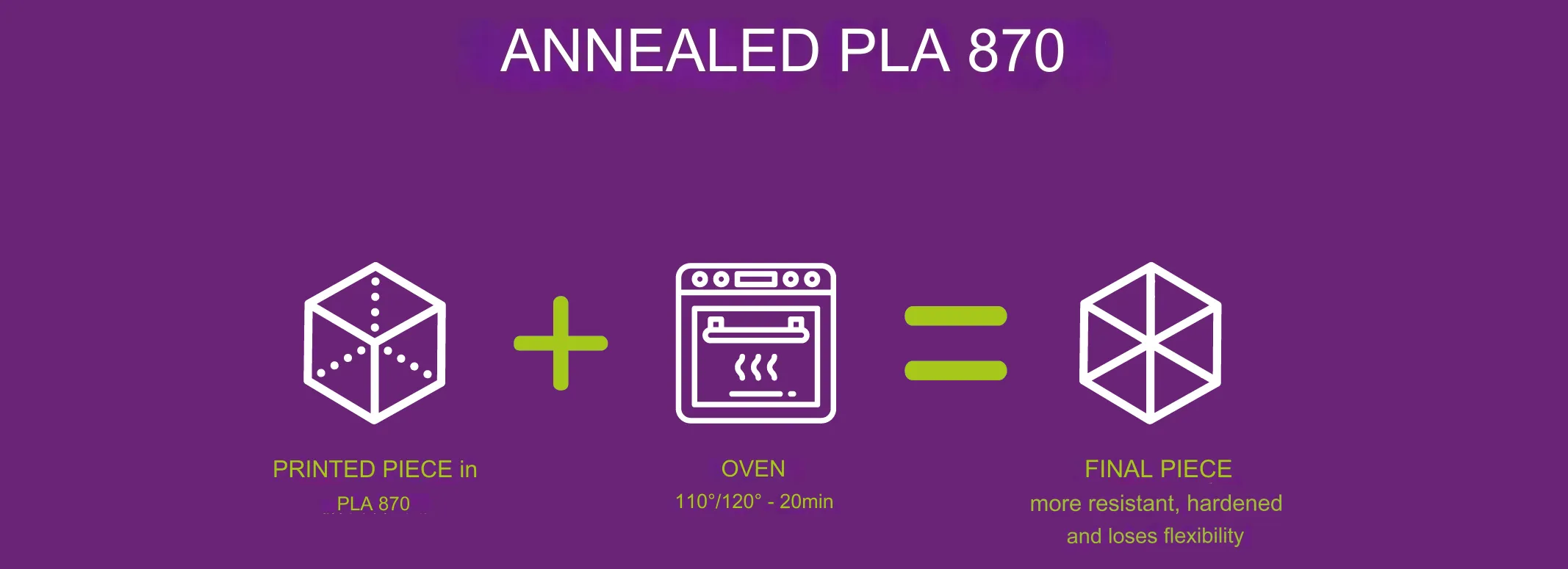The oven annealing process of a filament is a heat treatment widely used in the post-processing of 3D printed parts. This technique seeks to improve firmness, tensile strength and heat resistance.
It is true that the vast majority of makers love printing with PLA filament, because it is cheaper, because of the variety of colors and unlike other types of filaments we have fewer problems with warping and best of all, it is biodegradable!
But depending on the project, if we need to produce parts with more resistance we opt for the ABS filament that allows us a fast and stable print without giving up the hardness and resistance of the material.
Thanks to an exclusive formulation from NatureWorks we are manufacturing our PLA 870 filament with a diameter of 1.75 mm or 2.85 mm for 3D printers with FFF/FDM technology.
We highlight the PLA 870
This is a biodegradable and environmentally friendly filament made from polylactic acid (PLA).
It is an excellent choice for those looking for a versatile, easy-to-print material with high-quality results. PLA 870 does not emit unpleasant odors during the printing process, making it an ideal choice for those working in closed spaces. In addition, PLA 870 is easier to print than ABS, as it does not require a heated bed and is less prone to warping.
- It achieves 50% higher impact resistance than ABS.
- If we carry out the post-annealing process, we can increase its resistance up to 120%.
- Easy to print as it is a polymer such as PLA.
- Nozzle temperature: between 200ºC and 230ºC.
- Bed temperature: between 50ºC and 60ºC.
What is post annealing process?
Annealing is a process of increasing temperature to improve the firmness, tensile strength, and heat resistance of a given object.
Simply put, we are talking about heating the plastic to the point where its molecules can rearrange themselves, making its structure firmer, more stable, and with less internal stress.
To do this, we must put the pieces in an oven at a temperature between 110ºC and 120ºC for about 20 minutes; we can use a conventional oven.
It is important that during this time we keep an eye on the pieces so that they do not become deformed due to the heat and we can rest assured because it does not produce smoke or bad smells during the process.
When you take the pieces out of the oven, once they have cooled, you will see that they are more resistant and have hardened, losing some of their flexibility.
Discover the available colors of PLA 870, and now four colors of PLA 850 are also available on the website!



